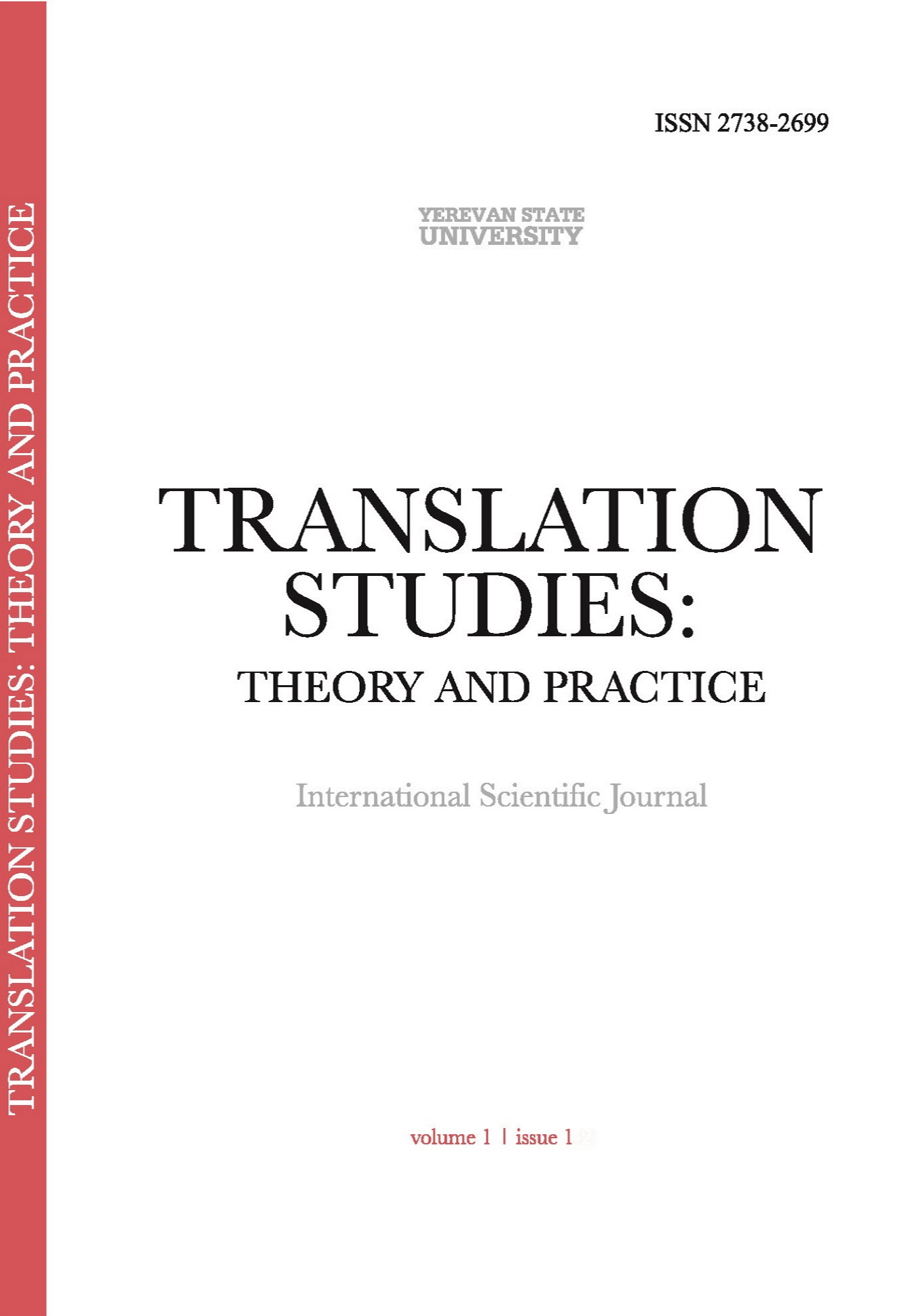Comparative Investigation of English and Armenian Compound Patterns
(based on F. Scott Fitzgerald's Novel “The Great Gatsby” and Its Armenian Translation)
DOI:
https://doi.org/10.46991/TSTP/2021.1.1.155Keywords:
translation, compound word, synthetic (closed), analytical (juxtaposed), patternAbstract
The novel “The Great Gatsby” by F. Scott Fitzgerald published in 1925 is one of the timeless classics of world literature which was investigated from different linguistic perspectives. Its vocabulary is abundant in compound words with a variety of morphological, syntactic, semantic peculiarities. In this paper, we aim at studying compound words in “The Great Gatsby” to illustrate their patterns in English and Armenian. We have investigated the compounds from the morphological-categorial point of view, from the perspective of the syntactic relations between their constituent parts. We have also briefly touched upon some of their semantic features. At the same time, a close attention was paid to the different ways in which compound patterns were translated into Armenian. The study of the main target of the paper is based on Sona Seferyan's translation of the novel “The Great Gatsby” into Armenian. A lot of examples of both synthetic (closed) and analytical (juxtaposed) compounds have been picked out. In Armenian within synthetic compounds we differentiate between those with a linking element, e. g. “աշխարհամարտ” (where “ա” is the linking element) and the ones without а linking element, e. g. “արևելք”. We assume that the peculiarities of compounds revealed in this paper will have significance not only for the description of their characteristic features but also for the general typological characterization of the languages under study.
References
Adams, V. 1973. An Introduction to Modern English Word-Formation. London: Longman.
Andrews, A., and E. Maksimova. 2010. Russian Translation: Theory and Practice. London and New York: Routledge.
Baker, M. 2011. In other Words: A Coursebook on Translation. 2nd ed. London and New York: Routledge.
Bloomfield, L. 1984. Language. Chicago and London: University of Chicago Press.
Fitzgerald, F. S. 2019. The Great Gatsby. Yerevan: Edit Print.
Lipka, Leonhard. 1992. An Outline of English Lexicology; Lexical Structure, Word Structure, and Word Semantics. 2nd ed. Max Niemeyer Verlag Tübingen.
Mattiello, E. 2013. “Extra-Grammatical Morphology in English.” In Topics in English Linguistics 82. Berlin/Boston: De Gruyter Mouton.
McCarthy, A.-C. 2002. An Introduction to English Morphology: Words and their Structure. Edin¬burgh: Edinburgh University Press.
Shuttleworth, M., and M. Cowie. 2014. Dictionary of Translation Studies. London and New York: Routledge.
Abeghyan, M. 1974. Hayots lezvi tesut'yun. Yerker. Hator Z. Yerevan: HSSH GA hrat.
Abrahamyan, A. 1962. Bayy j'amanakakits hayerenum. Girq 1. Yerevan: HSSH GA hrat.
Axayan, E. 1976. Ardi hayereni batsatrakan bararan. Hator 1-2. Yerevan: "Hayastan" hrat.
Ach'aryan, H. 1957. Liakatar qerakanut'yun hayuts lezvi - hamematut'yamb 562 lezuneri. Hator 3. Yerevan: HSSR GA hrat.
J'amanakakits hayots lezvi batsatrakan bararan. 1969, 1972, 1974, 1980. Hator 1-4. Yerevan: HSSH GA hrat. Hr. Ach'aryani anvan lezvi institut.
Fidjerald, F.S. 2014. Mets'n Get'sbin. (t'argm.) Anna Seferyan. Yerevan: Zangak.
Downloads
Published
Issue
Section
License
Copyright (c) 2021 Sirarpi Karapetyan

This work is licensed under a Creative Commons Attribution-NonCommercial 4.0 International License.





